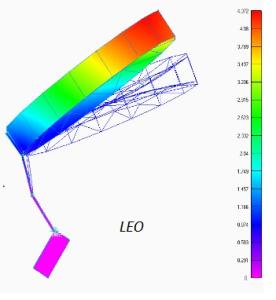Study on advanced multiple-beam radiometers

The objective of the study is to investigate novel architectures for real aperture multi-beam radiometers. The activity shall investigate and trade-off real aperture radiometer architectures based on multiple beam array-fed reflectors. The final instrument trade-off shall then be done on the basis of instrument end-to-end performance analysis (sensitivity, spatial resolution and FoV), instrument budgets (accommodation, mass, power) and complexity.
It is well known that real aperture radiometers feature very high snapshot sensitivity, if compared with synthetic aperture radiometers. On the other hand, synthetic aperture interferometric radiometers can provide wide FoV and high spatial resolution thanks to the synthetic aperture processing. Real aperture radiometers may become very attractive from the sensitivity performance point-of-view if a simultaneous multiple beam coverage is achieved in the entire FoV (i.e. both in across-track and in along-track directions). This implementation could lead to very high sensitivity, since the presence of along track beams would allow for high multilooking, hence yielding to accuracy improvement on the estimation of brightness temperature. An attractive RF-front-end/Antenna solution can be based on the adoption of an array fed reflector in a multiple feed per beam configuration. An optimized definition of the array configuration and associated beam forming should be carried out in order to evaluate the actual benefits of this concept and the drawbacks in terms of complexity and overall instrument budgets. Different reflector configurations (cylindrical, toroidal) which may exploit pushbroom techniques should be traded off as well. The study shall also analyse the possibility to exploit dense focal arrays, thus allowing for oversampling which, in turn, could improve beam efficiency. The activity shall start with a review of requirements and analysis of possible applicable frequency range. The study shall then define different instrument options and carry out a system level trade-off in order to select the most promising solutions. The instrument models shall be delivered in CDF compatible format.Comparison of performance with state-of-the-art radiometers will be carried out as well. The study shall end with the proposal of an instrument demonstrator.
